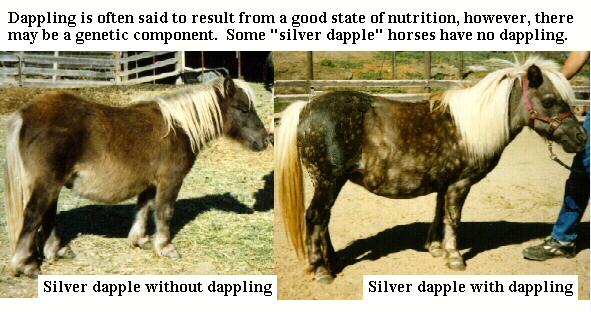
By J. Sharon Batteate
Gremmel and Zublin (1947) felt dappling was simply a stage in the greying process, and was not dependent on any genetic factor. However, some grays become dappled, and others never show any dappling. Dappling also appears on other colors besides gray, and thus cannot just be a stage of greying. In Shetland ponies, a diluted color called "silver dapple" is common. However, some lines of "silver dapples" don't actually have any dappling, and now the dilution is often referred to as just "silver". This seems to me to indicate that there might be some genetic factors involved in dappling, although they are undetermined at this time.

It has also been said dappling indicates a state of good condition or good nutrition. It may well be that good nutrition has an influence in the expression of dappling. However, it doesn't explain why dappling seems to run in some families and not in others, and why dappling shows seasonal and yearly variations in horses that are well fed and in a constant state of good nutrition.
Gremmel and Zublin's research did reveal some interesting things about dappling. Dapples seem to be centers of networks of capillary arteries. The degree of pigmentation depends on the blood supply, but there is no connection with layers of fat under the skin. The skin under a dapple appears less pigmented than the surrounding areas. The hairs in the center of the dapples are shorter than those on the outside hairs surrounding the dapple. This slight difference in texture is why you can see dapples on a black horse if he is angled in the light just right (see photo below).
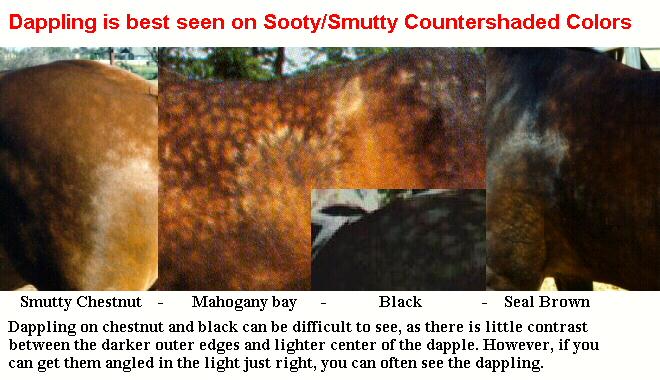

The different hair lengths in dappling is interesting. Other patterns, such as Appaloosa patterns, Paint/Pinto spotting, and brindle striping, also show various forms of coat texturing. While most of my Brindle horses did not show any dappling, I did have one line of brindles from a brindled buckskin mare (Im A Star Moon Bar) that also had dappling. I classified her brindle pattern as "seasonal" brindle because at certain times of the year, generally spring and fall, it was more visible than at other times. She also appeared much more brindled during the time she was lactating after foaling (spring, summer, and fall).
What was interesting was that when she showed the brindling, she did not look very dappled, and vice versa - when she looked very dappled, she did not look very brindled. I also observed in one of her daughters the following progression. First, the dappling developed producing the classic rounded dapple spots. Then, the lower edges of the dapple either further migrated, or regressed, leaving a drippy looking brindle streaking. This has caused me to speculate that dapple and brindle might be allelles of the same locus. However, the relation to dappling is undetermined at this time, as is the genetic nature of dappling and brindle itself.

Below is pictured another horse that also seems to have both dappling and brindling. His stable name is Bengal, and he is a Standardbred from Australia owned by Catrina Godden.
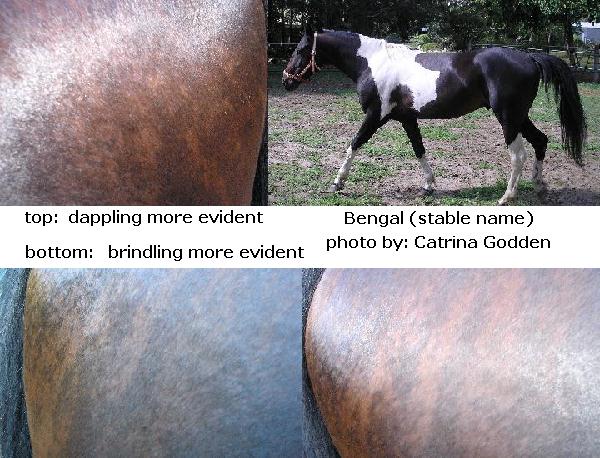
Also of interest is the seasonal variation of dappling. Below are pictures of two horses, taken at different times of the year. Refer to the pictures for each horse on the left side. In both horses, the dappling started as a darker spot (looking like a reverse dapple pattern). Then the darker hair migrated to the edges producing the classic lighter centered dapple. Similar migrations of pigment have also been reported in Appaloosa horses, although the dapple spots and appaloosa spots themselves probably result from different mechanisms.
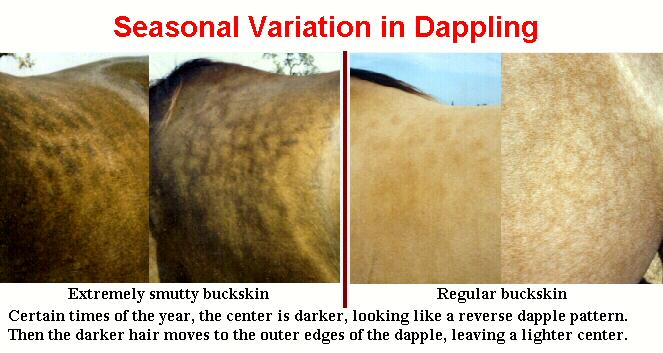
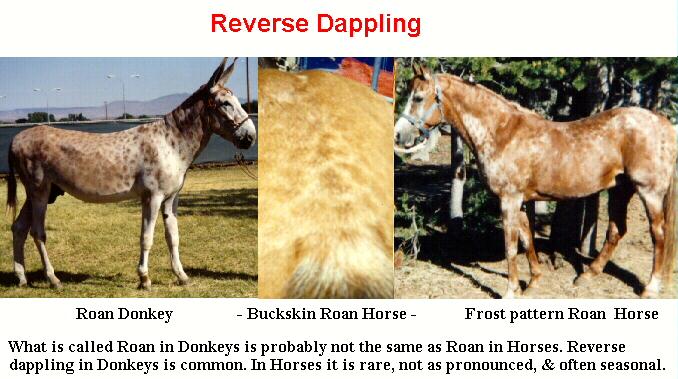
Use Browser back button to return to article Yipes! Stripes! index Brindle Horses site